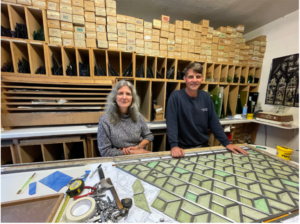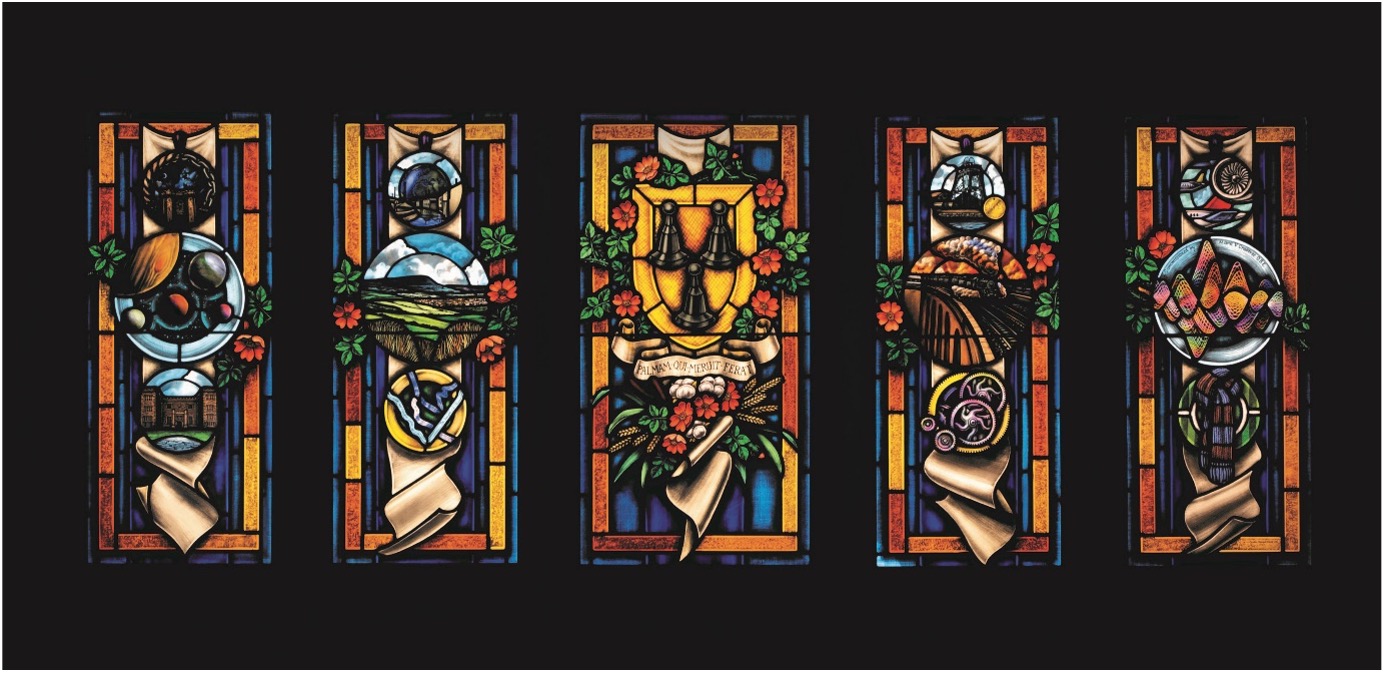The iconic, Grade II listed former Burnley Grammar School is certainly a landmark in the local area. It has been carefully and completely restored, with original features in place following many years of work and attention to detail. The final part of the restoration is the 1873 Wing, which was the original Grammar School building.
Burnley has been home to many significant achievements in technology and innovation. In order to properly celebrate this history, a set of stunning, unique stained glass windows have been installed in the Atrium at The Landmark.
Mark Crabtree OBE, of The Landmark, said: “To commemorate the opening of the 1873 Wing and The Great Hall, I commissioned this beautiful stained glass window to celebrate the achievements of Burnley’s past, and how that has shaped our future.
I wanted to commemorate Burnley’s significant achievements and showcase our strengths, with a nod to the history of the building. It’s a work of art, which makes the building look wonderful. The Landmark will continue to be a vibrant hub for entertainment, events and business, for future generations.”

The team behind the beautiful stained glass windows (L-R Deborah Lowe, Freelance Stained Glass Artist and Leon Conway of Pendle Stained Glass Ltd)
The stained glass windows have been hand-crafted by Padiham-based firm Pendle Stained Glass Ltd, in collaboration with freelance stained glass artist designer Deborah Lowe.
Headed up by Leon Conway, Workshop Manager at Pendle Stained Glass, the 12-month project, which included over 300-man hours, showcases a timeline of events in Burnley’s past, present and future.
On the process, Conway said: “Firstly we talked to Mark his vision to commemorate the restoration of the building, and Burnley’s rich history, then we got Deborah involved to look at the specific designs.”
Lowe commented: “The design isn’t just what the person wants, it’s what the building needs. What style is the building, what lighting is it going to have, all these things inform the final decision.”
“Mark wanted to celebrate the town, as well as representing the history of this particular building (the old Burnley Grammar School), so we went back a long way and tried to compartmentalise certain parts of Burnley in each window.”
She added: “Each window has roundels on it, this is a traditional stained glass motif which suits the building but with a modern twist, which fits in very well with the new ideas for the venue.”
All five parts of the beautiful, backlit stained glass window focus on iconic moments and landmarks in Burnley.
Lowe said: “The creativity and talent that has come from the town is mind boggling.”
Iconic landmarks and achievements of Burnley
From left to right, the early history of Burnley is first referenced, with the trial of the Pendle Witches followed by Towneley Hall, with a specific focus on Richard Towneley and his work and observations on the moons of Jupiter which went on to help make other scientific discoveries.
The focus then switches to a visual representation of how Burnley distributed its technology and products to the world, with the different roundels depicting the town’s rivers and canals, as well as a ‘river map’ showcasing the rivers Brun, Calder and the Leeds & Liverpool Canal.
Rather fittingly, the centrepiece is built around the Coat of Arms of Burnley Grammar School, surrounded by Lancashire roses, as well as cotton and wheat to reference Burnley’s great history as one of the country’s foremost cotton spinning, weaving and loom manufacturing towns. Bulrushes represent the river Brun from which Burnley gets its name.
